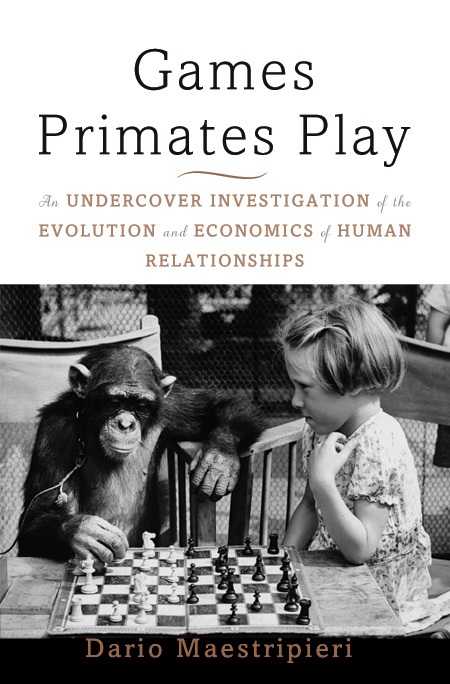
In his best-selling 1964 book Games People Play, psychiatrist Eric Berne makes the case that when people interact with their family members, friends, coworkers, or strangers, they do so according to specific patterns that are governed by particular rules and usually characterized by predictable outcomes. Calling these patterns “games,” Berne points out that the predictability of these patterns and outcomes stems from our tendency to assume particular social roles in these relationships (for example, “the Child,” “the Parent,” or “the Adult”) and that these roles are associated with certain behaviors. Therefore, relationships that involve the same role pairs – such as the Child and the Parent – have a lot in common.
Our understanding of human relationships has evolved significantly in the half-century since Berne’s book was published. Research in psychology and psychiatry has shown that our behavior in social relationships is the result of complex interactions between our genes and our environment and the effects of these interactions on our brains, emotions, and thoughts. In analyzing the complexities of human relationships with increasing precision, however, researchers appear to have lost interest in their general underlying patterns. They no longer ask why these patterns exist or where they come from. To answer these questions - indeed, to identify the patterns at all - we must step out of the laboratory and take a good look at people and their relationships in the context of other life forms and their behaviors. In other words, we need to venture out of psychology and into biology. Why? Because many of the rules and patterns underlying human relationships developed through evolutionary processes, and those same evolutionary processes have produced similar patterns in other animal species. Tens of thousands of studies of animal social behavior conducted in myriad different species have shown that all social animals have relationships with members of their own species. This means that many of the games played by people are also played by other animals, and especially by the species of monkeys and apes that are closely related to us, such as baboons and rhesus macaques, or chimpanzees and gorillas.
An underlying theme of Games Primates Play is that human nature is manifested in social interactions more than in any other aspect of our behavior or intellectual activity. This has two major implications. First, since our social behavior has been strongly shaped by evolutionary processes such as natural and sexual selection, we can explain it using cost-benefit analyses and other rational models of behavior (for example, game theory) developed by evolutionary biologists and behavioral economists. Second, we can use studies of social behavior and social relationships in other species to highlight similarities between animals and humans that are the product of either phylogeny or convergent evolution.
Dario Maestripieri is a leading behavioral scientist who has studied the social relationships of human and nonhuman primates for almost thirty years. In Games Primates Play, he examines human social behavior with both rational scientific models and evolutionary and comparative arguments, using examples from closely related primates that live in societies similar to our own. Other books have taken this approach to try to elucidate aspects of human nature and behavior. But Games Primates Play shows for the first time that the adaptiveness of human behavior and its evolutionary legacy extend to both the most mundane and the most specialized aspects of modern social life. The tools of behavioral science can be used to understand not only what men and women find attractive in a romantic partner or how people make decisions about investing their savings in the stock market. The same scientific theories and principles can also be used to explain people’s behavior in everyday social situations. We often assume that our behavior in these everyday situations simply reflects our unique personalities, the choices we freely make, or the influence of our environment. In reality, people around the world, living in very different environments and exposed to very different cultures, behave the same way in these situations. We don’t recognize these similarities in part because we are often unaware of our own behavior and in part because we don’t pay too much attention to what others do.
Games Primates Play will make people think about themselves and their behavior in a way they’ve never done before. After reading Games Primates Play, people will realize that when they exchange emails with someone, certain unspoken rules about dominance explain how quickly they reply to messages, how long the replies are, and whether or not they are likely to terminate the email conversation; the same rules regulate the exchange of grooming behavior between dominant and subordinate individuals in rhesus macaques or chimpanzees. Readers will also realize that when they begin working for a new company, they use social strategies to climb the power ladder that are quite similar to those used by male macaques who join a new group. The same theories that explain the formation of aggressive coalitions in baboons can also explain political alliances and strategic decisions in the workplace. Some readers will be amused to discover that the laws of supply and demand that regulate people’s desires and decisions in the marriage market are the same as those that that regulate the mating markets in birds and monkeys, or the market in which large fish called “clients” look for cleaning services from small fish who swim inside their mouths and eat their leftovers. Finally, readers will learn that when they engage in intimate interactions with their romantic partners, they are not only expressing their love or pursuing sensual pleasure; they are also testing their partner’s willingness to tolerate impositions, and therefore his/her commitment to the relationship, the way a capuchin monkey tests the strength of its bond with another monkey by sticking a finger up the other’s nose and waiting for a reaction.